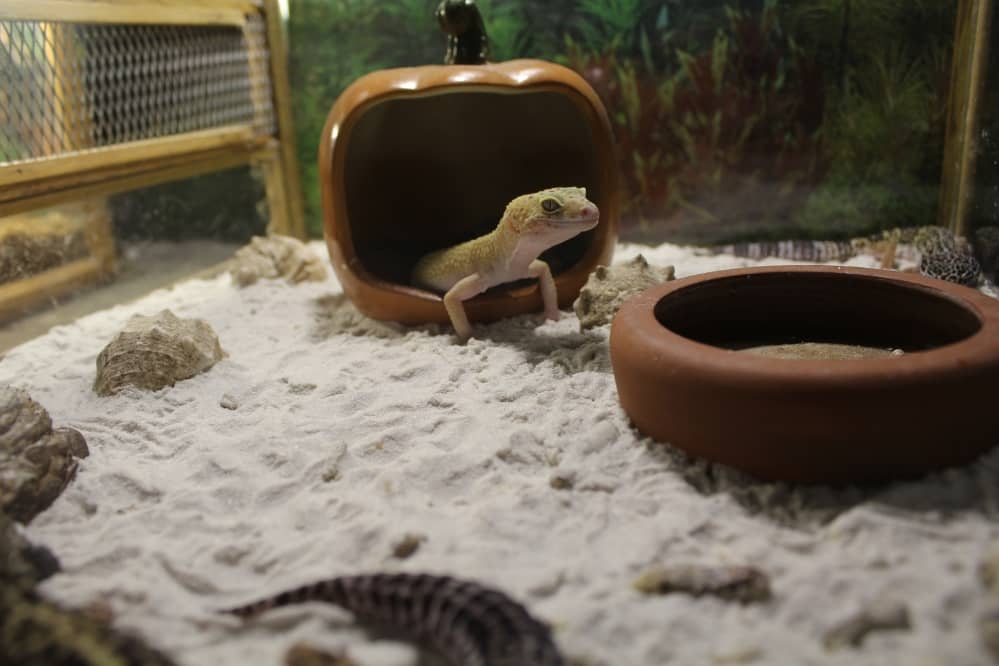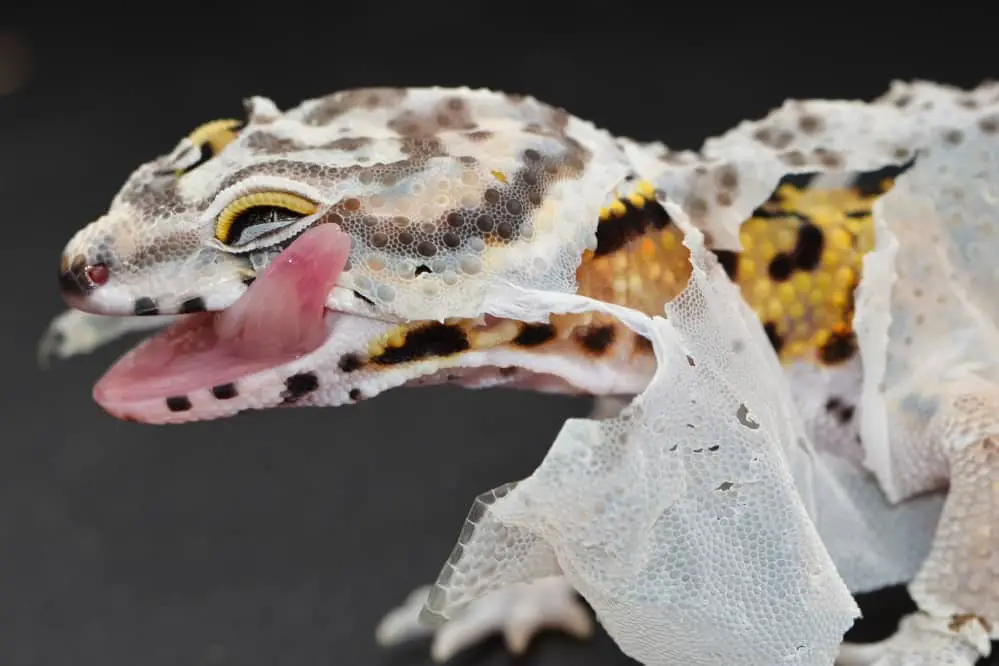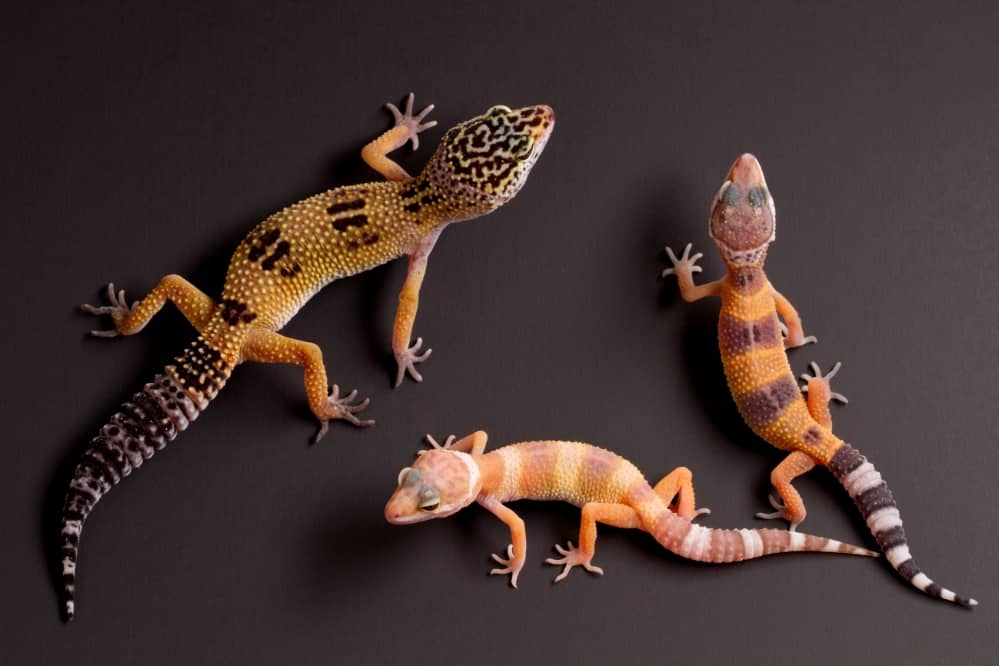Leopard geckos often come in a stunning array of colors and patterns that can actually fluctuate over time. Typically, leopard geckos are yellow or gray with various darker patterning. However, it is not uncommon for leopard gecko owners to notice that their gecko is changing color over time. This leads many to wonder if the color change is due to age or overlying circumstances. In this article, we’ll answer whether or not leopard geckos change color over time and highlight a few other causes for color-changing in leopard geckos.
Changing Color with Age
If you adopt a baby leopard gecko, it is very common to see its colors change as they age from young to mature.
Spots typically appear as a leopard gecko ages, and banding can also appear. Darkening is also typical of an aging leopard gecko. If you notice spots or banding appearing as well as general darkening within the first year or two of your leopard gecko’s life, this is typically not something to worry about.
It is most common to see the change on a leopard gecko’s tail and head.
Their tail may gain lots of spots or darker bands as a leopard gecko ages.
Their head may also undergo color changes and develop lots of dots.
However, it is not uncommon to see spots or darkening appear on the gecko’s back or stomach as well.
Aside from the darkening of the skin and the appearance of spots and bands, it is also common to see the color of your gecko develop and become more vibrant.
As leopard geckos, age, particularly around the age of two years old, their colors tend to become bright and more vibrant. This can be very fun to observe as a leopard gecko pet owner, so make sure to watch closely if you notice this phenomenon. It is thought that leopard gecko’s colors seem to brighten because either their pigmentation is becoming more concentrated and intense in some areas or their body itself is producing more melanin.
Melanin is responsible for the production of color, so an abundance of melanin will make the colors more vibrant and noticeable.
A leopard gecko will produce more melanin when they undergo a process known as metamorphosis as they age from adolescence to adulthood. This is similar to puberty in humans. The increase of vibrancy when entering adulthood is sometimes attributed to sexual maturity as more vibrant colors are seen as more attractive in the wild.
It is important to remember that the changing of color or development of spots of bands while your leopard gecko ages are normal and healthy! It can be a very fascinating process, so try to observe as much of it as you can.
Other Causes of Changing Color
Aside from the natural process of aging and maturing, there are a few other factors that can influence color change in leopard geckos. These, unlike aging, are mostly external factors. Some examples of this, which we will go into further detail in this section, including environmental changes, stress, nutritional deficiencies, and shedding.
Environmental Changes

If there have been changes implemented in your leopard gecko’s habitat including a change of substrate, a change of temperature, or a change in the aquarium, your leopard gecko may experience a slight change of color as result. If your leopard gecko’s aquarium is too cold, it may turn darker as darker colors absorb more heat. Different substrates can also cause changes to a leopard gecko’s color, as they may cause darkening. An aquarium that is too small or overexposed to UV light can also be responsible.
Stress
If your leopard gecko is experiencing stress, it may be reflected in the color of its scales. They may experience stress due to changes in their environment, changes in their diet, or if they are being overly handled. A stressed leopard gecko will darken. If you suspect your leopard gecko is experiencing stress, do as much as you can to alleviate it. You should introduce changes, including environmental or dietary changes, slowly to allow your leopard gecko to adjust. You should also be aware of its behavior when you handle your gecko to see if it is reacting negatively.
Nutritional Deficiencies
If your leopard gecko is experiencing a calcium deficiency, it may experience darkening. This should be addressed immediately as it can lead to further health issues. You can address a calcium deficiency by adjusting your leopard gecko’s diet to include calcium powder or supplements.
Shedding

Shedding is a natural process that leopard geckos undergo throughout their lifetimes. Leopard geckos tend to shed several times per year, and this is a normal occurrence that is not to be meddled with. When leopard geckos are about to shed, they may appear more dull or light in color. Once they have shed, they will likely appear more vibrant or dark as their new scale’s color has not faded. You should not have to help your gecko shed their skin as it is a natural process. However, if you notice they are having difficulties, try soaking them in room temperature to warm water to encourage the skin to loosen.
Final Thoughts
It can be quite fascinating to see your leopard gecko undergo color changes. Whether they are developing spots or bands, their skin is darkening, or their colors are becoming more vibrant and noticeable, leopard gecko owners are likely to be curious about the changes happening to their gecko’s appearance. Colors become more or less intense over time and the development of spots and bands is quite normal in leopard geckos, especially as they age.
During the period that leopard geckos mature, they undergo quite a few physical changes. This can include changing their colors. However, aging is not the only factor that can be responsible for changing colors in a leopard gecko. Environmental changes, stress, nutritional deficiencies, and shedding are all other factors that could influence color changes in leopard geckos.
In this article, we’ve discussed the various causes of changing colors in leopard geckos as well as answering the question of whether or not leopard geckos change color as they age.

